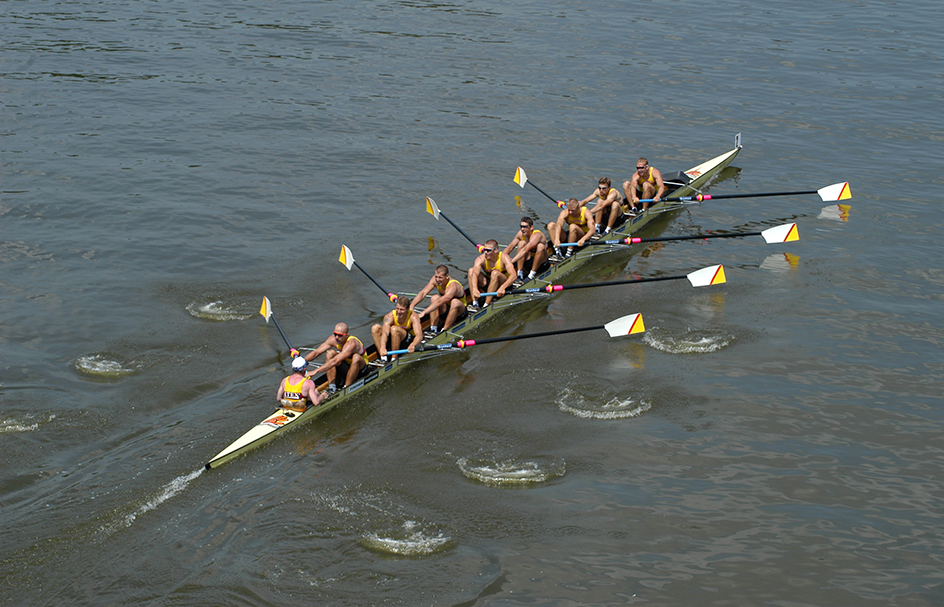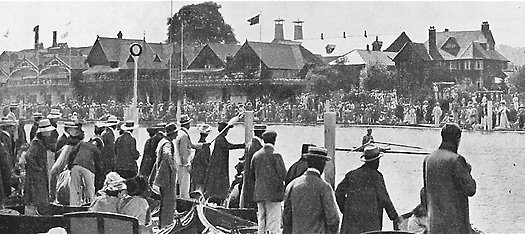Rowing is the act of propelling a boat with oars. Many people find rowing on lakes, rivers, and lagoons to be a pleasant form of exercise. Rowing races have also developed into well-organized amateur sporting events. The sport of rowing is also known as crew, particularly in United States schools and colleges.

Types of rowing.
In racing, there are two main kinds of rowing: (1) sculling and (2) sweep oar rowing.
In sculling, each rower, or sculler, uses two oars. Both the boat and the oars are called sculls. Sculling crafts include single sculls, for one person; double sculls, for two people; and quadruple sculls, for four. A few eight-place sculls, known as octuples, have also been built.
In sweep oar rowing, each person uses one oar. Sweep oars are larger and longer than sculling oars. The boats used hold two, four, or eight people, and are called pairs, fours, and eights. Eights, some fours, and pairs are designed to hold an additional crew member called the coxswain. The coxswain steers the boat. The coxswain may also direct the timing of the oar strokes for the stroke, the rower who sits closest to the coxswain and sets the pace for the other rowers.

Racing boats are lighter and more fragile than ordinary rowboats. For this reason, they are called shells. There are no rules limiting the length, width, or shape of a shell. A single scull may weigh a minimum of 30 pounds (14 kilograms). An eight shell may be 60 feet (18 meters) long, 2 feet (61 centimeters) wide, and weigh a minimum of 205 pounds (93 kilograms).
Competition.
The Olympic Games offer 14 rowing events in open weight classes for both men and women. World championships are held each year for junior and lightweight classes. World championships for open weight classes are held each non-Olympic year. The events are held by the Federation Internationale des Societes d’Aviron (FISA), the ruling body for rowing.
Racing meets called regattas are held annually throughout the world. A number are open to contestants from all nations. The Henley Royal Regatta, an English event that started in 1839, is held each year at Henley-on-Thames. Other important regattas include the Royal Canadian Henley Regatta at St. Catharines, Ontario, and the US Rowing National Championships.

History.
Rowboats with rudders for steering were in use before 3000 B.C. The ancient Greeks and Romans traveled in huge rowboats called galleys (see Galley). These boats had long rows of oars which were often placed one above the other. The Vikings were other early peoples who made skillful use of rowboats.
Thomas Doggett, an English comedian, helped originate boat racing in the 1700’s. He offered a trophy known as the “Doggett Coat and Badge” to the winner of a race on the River Thames. Later, regattas became important sporting events at many universities. The first race, between Oxford University and Cambridge University, took place in 1829. In the United States, the oldest collegiate regatta is held annually by Harvard University and Yale University. It started in 1852.
